
Amazing views from Tumgun Lookout in Burleigh Head National Park (this print is available in our online print gallery)
A place that certainly doesn't need an introduction, Burleigh Heads is one of the most popular beachside areas on the Gold Coast and adored by locals and tourists alike. If Surfers Paradise was considered the capital of the Gold Coast, then Burleigh Heads would definitely fit the bill as either a Sydney or Melbourne in terms of things to do and for its vibrant scene of bustling cafes, restaurants and nightlife.
Peeking out through the trees at Tallebudgera Creek (this print is available in our online print gallery)
Jellurgal (aka Burleigh Head) is the ancestral home of the Kombumerri Clan, one of ten distinct clans of the Yugambeh People (the traditional landowners and custodians of the Gold Coast region). With regards to the meaning of Jellurgal, there has been speculation that it refers to either 'sugar bag' or 'bee's nest'. According to the local Kombumerri Dreaming, Jellurgal was created by Jabreen (the Creation Spirit) who formed the present day headland by stretching out after awakening (it is said that his finger can still be seen today in the form of rocky basalt outcrops at the base of the headland). The remnants of a 4,000 year old midden can be seen from the path in the national park although you may miss it unless you know what you're looking for (think a pile of shells that may look out of place against the green backdrop). Around a kilometre north of Jellurgal stands Jebbribillum, or 'Little Burleigh' as others refer to it today.
Picture perfect day at Burleigh Heads (this print is available in our online print gallery)
At the southern side of the headland lies an ochre pit that was once used by the local inhabitants. According to Clinton Brewer, an indigenous ranger with Queensland Parks and Wildlife, ochre was used to convey messages and denote different occasions: "There's different coloured ochre for different occasions so white ochre is universal, it can be used for just about anything, in some areas of Australia you can get blue ochre... red ochre - funeral business, sad business, sorry business. Red ochre represents blood, life source, a very very powerful coloured ochre, a very powerful message you want to send if you wear red ochre. It becomes like a paste, like a paint, you can apply it quite easily - so it's very very simple but a very very effective way of communicating" (ABC, 25/5/2012).
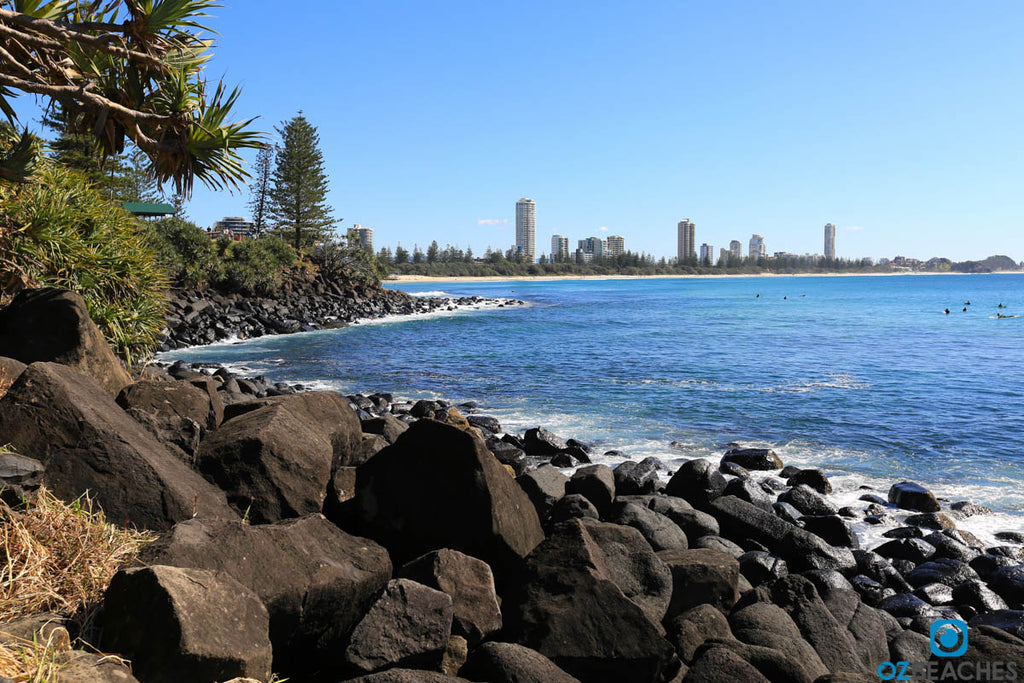
Looking north from the ocean view track at Burleigh Head National Park
The area around Burleigh Head was formed around 23 million years ago by ancient lava flows from the nearby and extinct shield volcano, Mt Warning. In the early colonial days of 1840, surveyor J. R. Warner was commissioned to survey the coastline near Moreton Bay. As he passed what is present day Tallebudgera Creek, he noted a large volcanic looking basalt headland and thought it looked 'burly' in appearance and around the 1880s the name was changed to 'Burleigh Head' as it is known today.
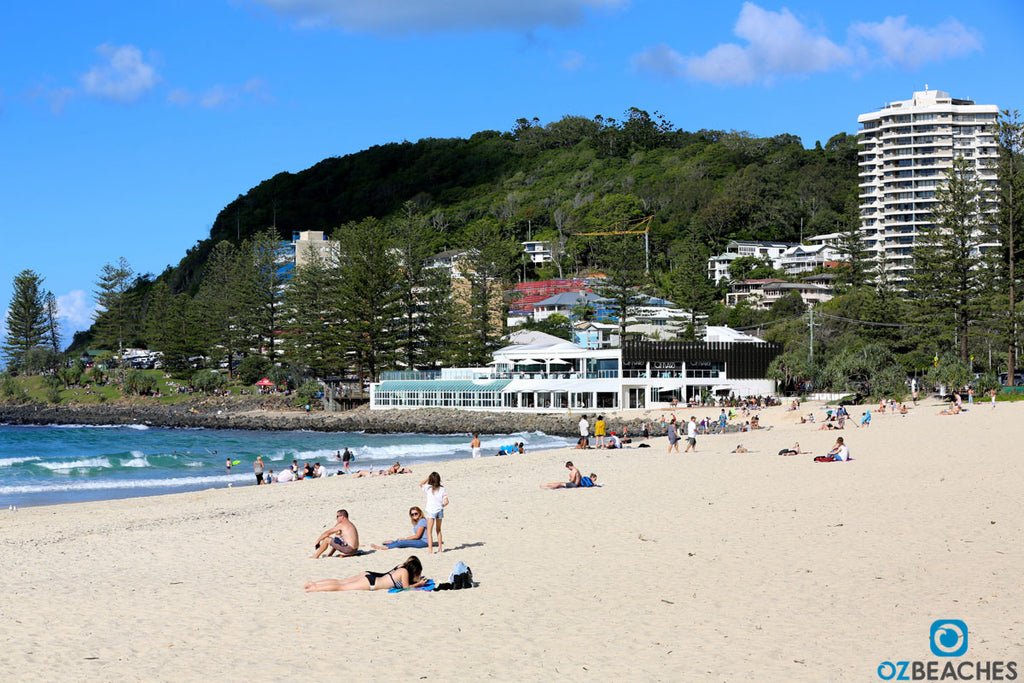
Looking south towards Oskars restaurant at Burleigh Head
As described by the Burleigh Beach Tower website, there was an initial auction of 65 allotments at Burleigh Heads that took place at the Lands Office in Beenleigh in 1872. Even back then it was noted that Burleigh Heads was destined to become “the fashionable watering place of South Queensland”. As A Special Tourist envisions in 1876: “I can see… the white villas rising tier upon tier on the surrounding hill slopes … The bronzed visitor drinking in the sea breezes, and forgetting fever and ague”. At this time Burleigh was inaccessible by road and was a relatively isolated spot that was rarely visited, and when you fast forward to what Burleigh is today it's amazing to think of the foresight the early planners had back then.
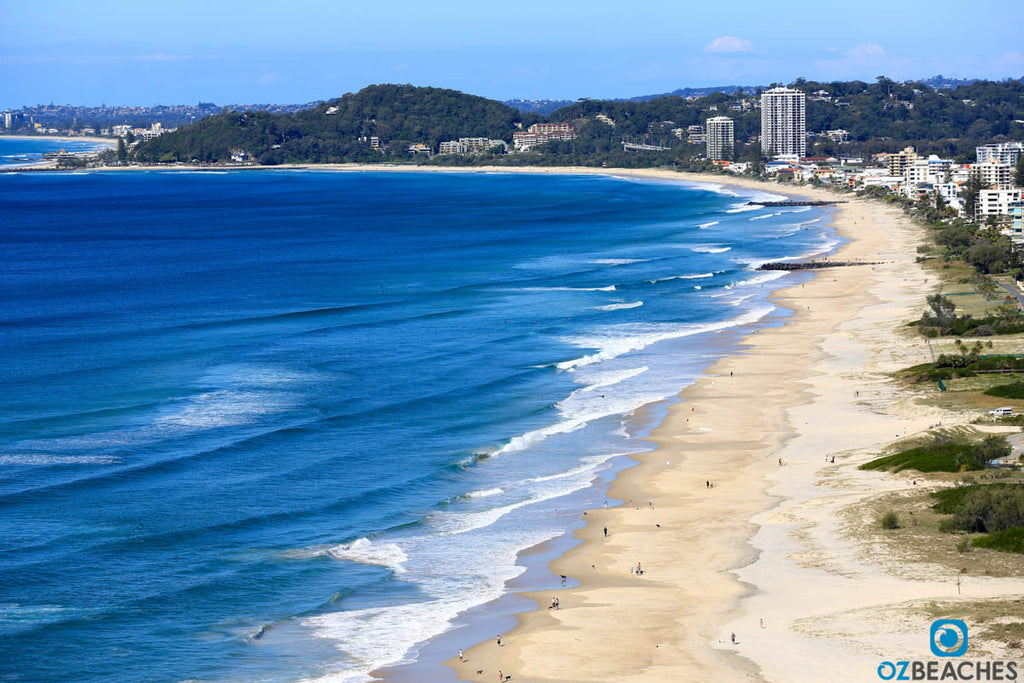
Looking south towards Palm Beach from Burleigh Head lookout
"By 1882 the Nerang Divisional Board was clearing a track to “Meyer’s Ferry” (now Cavill Ave) which allowed wheeled vehicles to cross from Bundall to the coastline. This opened the way for produce from Tallebudgera to reach Southport and for groups of travellers to enjoy the brisk journey by buggy or carriage along the beach. Oysters from Tallebudgera Creek (from beds leased by R. Griffith) were a delicacy enjoyed at guesthouses at Southport. Fast forward to present day and the oysters found in the creek are no longer fit for human consumption. Tourism on the south coast was underway and in 1883 Frederick Fowler, a member of the Board, decided he would truly put Burleigh on the map. Fowler was a well known timber getter, hauler and grazier in the Tallabudgera district and heeding the call for a “house of accommodation” at Burleigh became the founder of modern Burleigh Heads."
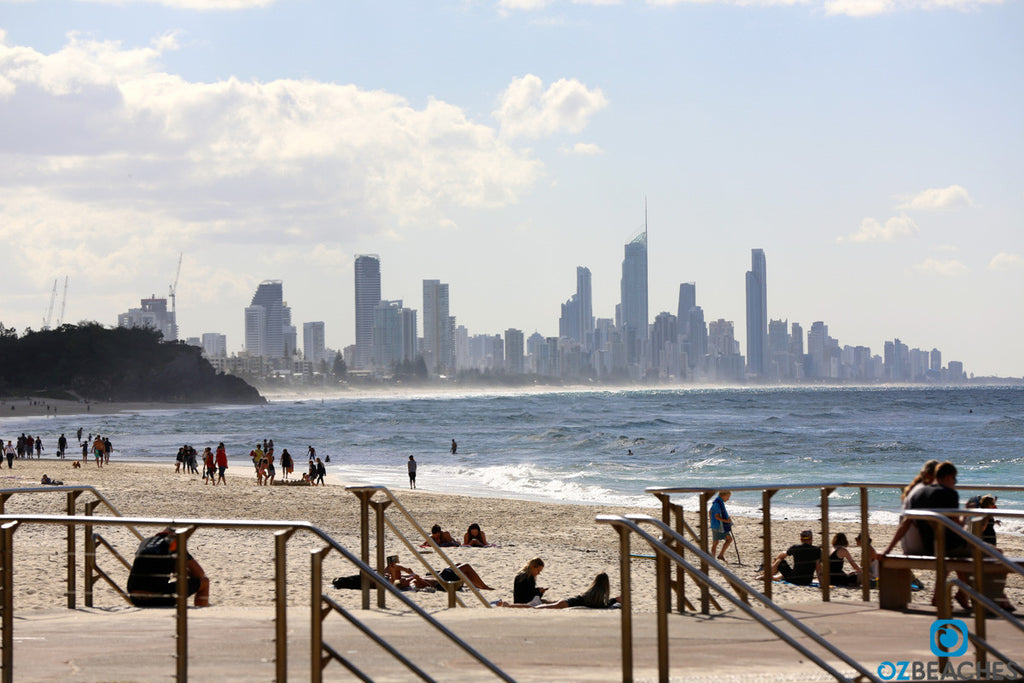
Looking north towards Surfers Paradise
"The dawn of the new century saw a small number of residences on the headland, but with the arrival of the railway line extending to the Tweed and the opening of the station at “Oyster Beds” (which became “Booningba" or "West Burleigh”) in 1903, the coach line ceased operations. Burleigh was a “half hour pull” from the station and few bothered with the extra discomfort or expense of such an excursion. Burleigh, however, had its advocates and a fair number still travelled along the beach from Southport and several district families, from Tallebudgera, Mudgeeraba and Nerang would visit for picnics, or for Easter and Christmas camps. Burleigh was shaped by the idea of holidays and with the eventual increasing use of the “horseless carriage” combined with the advent of the opening of the Jubilee Bridge in 1925, the new century saw much progress towards its potential as the future sanatorium of Queensland as envisaged in 1876". Burleigh was eventually settled as a quiet fishing village increasingly visited by tourists from the early 1900s which saw early development of restaurants and guesthouses. Since these days, Burleigh has established itself as one of the premier holiday destinations on the Gold Coast.
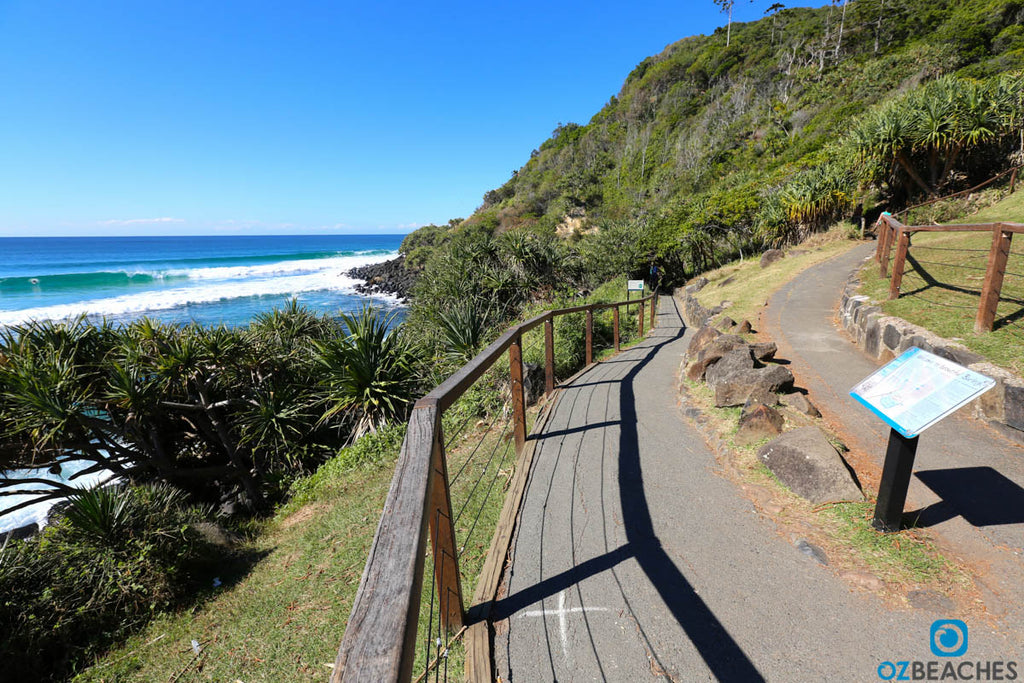
The entrance to the ocean view walking track at Burleigh Head
Burleigh Head National Park was originally set aside as a public reserve in 1886 and officially declared a National Park in 1947. The 27.6 hectare park covers the entire headland and it is one of the last headlands on the Gold Coast that remain substantially in its natural state. The distinctive headland soars around 79m above the beach and is home to an amazing array of flora and fauna. Despite its relatively small size, there's a lot to see within the park boundaries including a beautiful littoral rainforest, old eucalyptus trees, groves of Pandanus Palms, tussock grass and coastal heathlands, mangroves, creeks and well defined walking trails. Not to mention the amazing basalt rocky shoreline and last but not least the golden sandy beaches that surround Burleigh Head on both sides.
Looking south from the lookout at North Burleigh Beach (this print is available in our online print gallery)
Burleigh has two main walking tracks that wind either along the coast or over the headland and both make for a scenic way to spend an hour of your time. The ocean view track is 1.2km in length (one way) and rated class 2 by the Australian Walking Track Grading System (fairly easy and accessible for most). This track takes you around the rocky foreshore through the littoral rainforest and pandanus groves, and some of the highlights are watching the waves break out at the point or relaxing at Echo Beach or in the calm waters of Tallebudgera Creek at the end.

Looking north from the lookout at the top of Burleigh Head
The rainforest circuit is a 2.3km return track (class 3) that gives you amazing views of the coastline north and south of Burleigh Head. If you happen to be here during winter or spring you have an excellent chance of spotting migratory whales as they make their way up and down the east coast (Tumgun Lookout is a great place to spot Humpback and Southern Right Whales). If you don't happen to be here during these cooler months then don't despair, there's a huge range of wildlife to see including Sea-Eagles, Koalas, large Goannas, Tree Snakes, Brushturkeys and more.
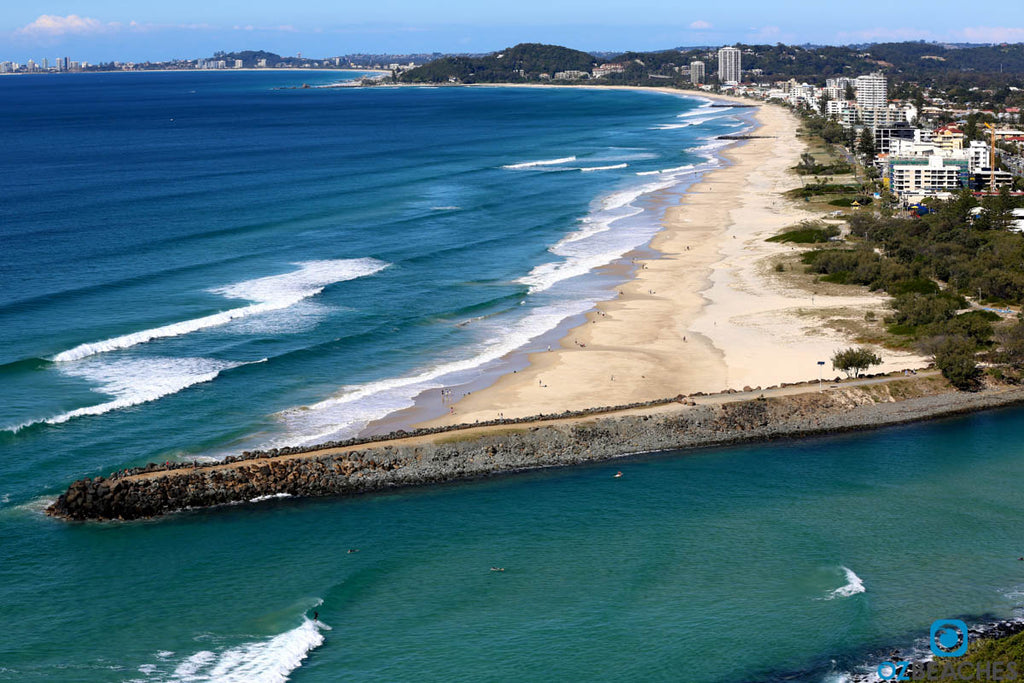
Looking south towards Palm Beach from Tumgun Lookout
Burleigh Head is made up of a series of volcanic rock and hexagonal columns of basalt which can be observed from the top of the headland. These boulders are dotted throughout the area and you can see how some have tumbled down to the rocky shoreline below. The movement of boulders is an ongoing natural geological process and there is increased risk of rockfall during severe weather. Rockfalls are still a fairly common occurrence at Burleigh Head National Park and there were potentially life-threatening boulder falls occurring in 1998, 1999 and 2014.

The waves out the back of Tallebudgera Creek fire on their given day
Burleigh Beach faces ENE and runs north for 2km from the headland towards South Nobby Head. The point break is renowned as being one of the best and most consistent surf spots on the east coast of Australia, and if you're graced with a moderate SSE swell, offshore S-SW winds and low to mid tides, strap yourself in for one of the most unforgettable surfs of your life. The righthand waves peel off the point and grind down the reef at lightning speed which makes it perfectly suited to stand-up surfing, and the headland itself makes for a stunning backdrop when you're out in the water. Be warned however - locals are very protective of this spot and fights are not uncommon here so enter the water with a level head. Burleigh Head lays claim to fame for developing the modern format of the man on man surfing competition, which apparently began here back in 1977.
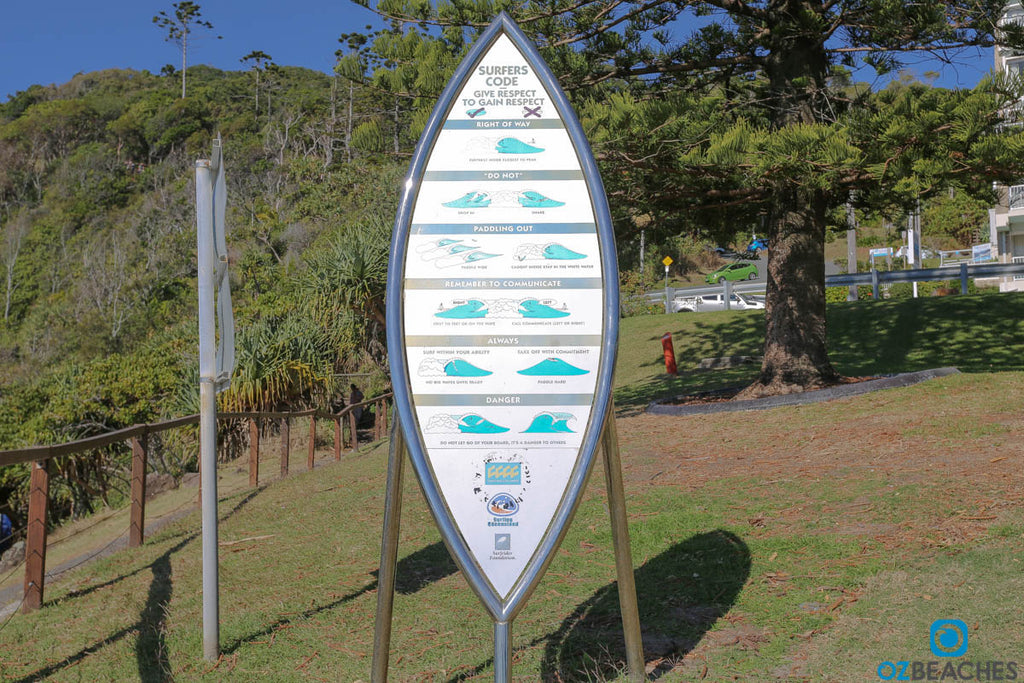
The sign doesn't really help things at this surf spot unfortunately
In recent years Burleigh has established itself as one of the main cultural centres of the Gold Coast. The area is host to a vibrant fashion, arts and craft scene that sees everything from farmers markets to emerging artists to boutique arts and crafts made by local designers. The Village Markets (TVM) runs on the 1st and 3rd Sundays of every month from 8:30am to 1pm at Burleigh Heads State School. According to their website it has everything "From men's and women's fashion by emerging and local designers, vintage clothing sourced from around the world, high quality pop-up shops, to up-cycled and handcrafted furniture, unique art and homewares."
The Burleigh Art and Craft Market is held between 8am and 2pm on the last Sunday of every month in the parklands located right on the beach front. There's over 150 stalls of fresh produce and locally made arts and crafts on offer and it's a popular day out for families who leisurely stroll along looking at the stalls against the beautiful backdrop of Burleigh Head.
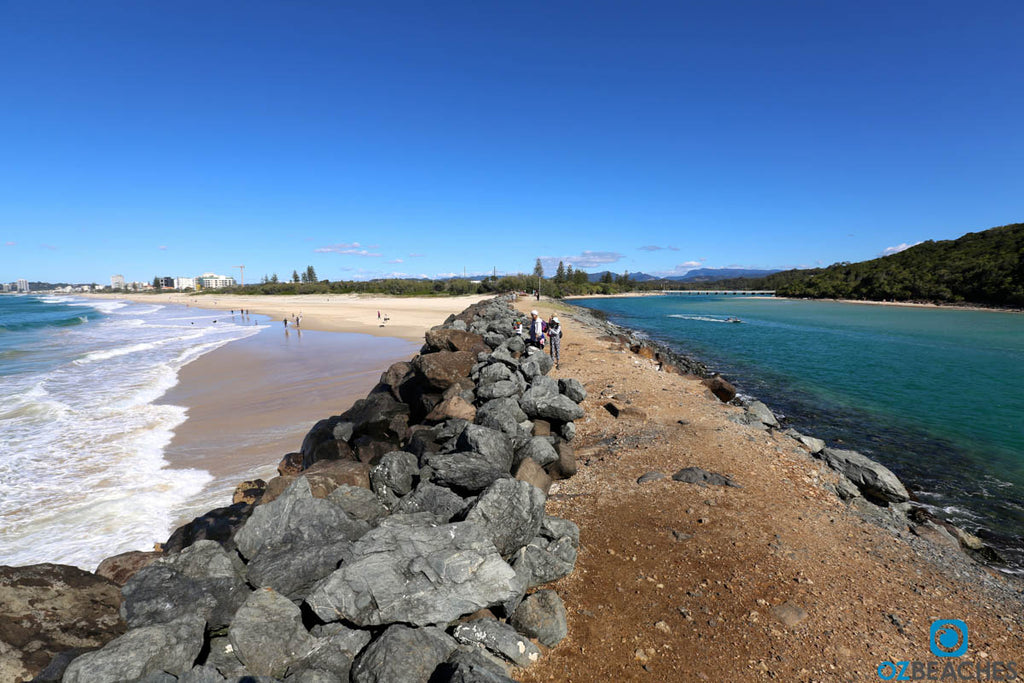
The rockwall separating Tallebudgera Creek from Palm Beach
Over the last few years, Burleigh has established itself as one of the premier dining destinations on the Gold Coast. It's home to a wide variety of food options that range from breakfast and lunch style cafes right up to fine dining establishments on the beach, all while somehow retaining its laid back seaside charm and village feel. James Street is the heart and soul of the Burleigh food scene with its selection of cafes' and all day breakfast options, so whether you're a coffee connoisseur, food critic or simply looking for a casual mid-afternoon or late night bite, Burleigh is certain to have something to suit your tastes and budget. Some have even gone as far as saying that Burleigh is on its way to becoming the next Byron Bay...(organic chai latte anyone?)

Tallebudgera Creek is perfect for paddleboarding
Tallebudgera, or 'Good Fish' as it was reportedly called by its traditional land owners, is a beautiful estuary system known for its crystal clear waters and watersport activities. The Tallebudgera Creek Tourist Park is a hugely popular holiday destination thats excited generations of locals and holidaymakers who flock here for a relaxed holiday lifestyle that revolves around camping, swimming, picnicking, kayaking, paddle boarding, fishing and surfing. Book well in advance if you want to stay here as you'd be hard pressed to find a more popular and affordable holiday location on the Gold Coast.
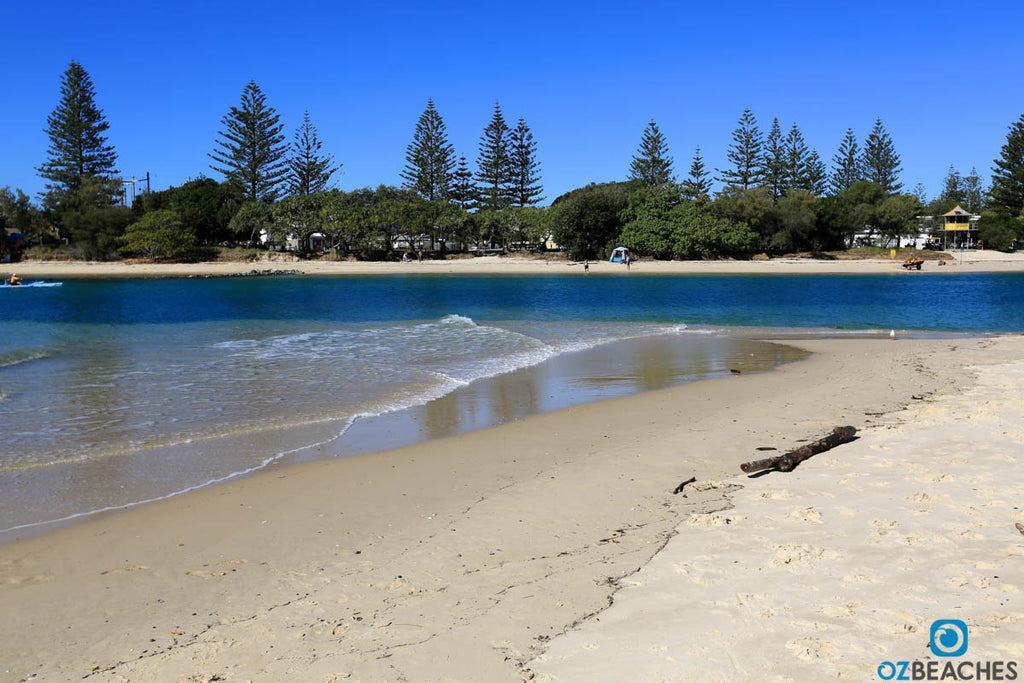
Popular swimming spot for families with kids - Tallebudgera Creek
One of the unique things about Burleigh Heads is that you can feel like you're a million miles away while actually being smack bang in the heart of suburbia at the same time. From one angle all you can see are the countless high rises that dominate the beachfront and the relentless traffic congestion of the Gold Coast Highway. From another angle you can be perched up high on Burleigh Head in the National Park and looking south for kilometres across unspoilt beaches and views that flow uninterrupted to the border of NSW. The parkland near the beach is a great place to relax if you want the best of both worlds and is well equipped with amenities such as picnic areas, BBQs, kids playground, exercise equipment and the Burleigh Surf Mowbray Park Surf Life Saving Club which is a great place to kick back and enjoy a drink and reasonably priced meal with million dollar views.
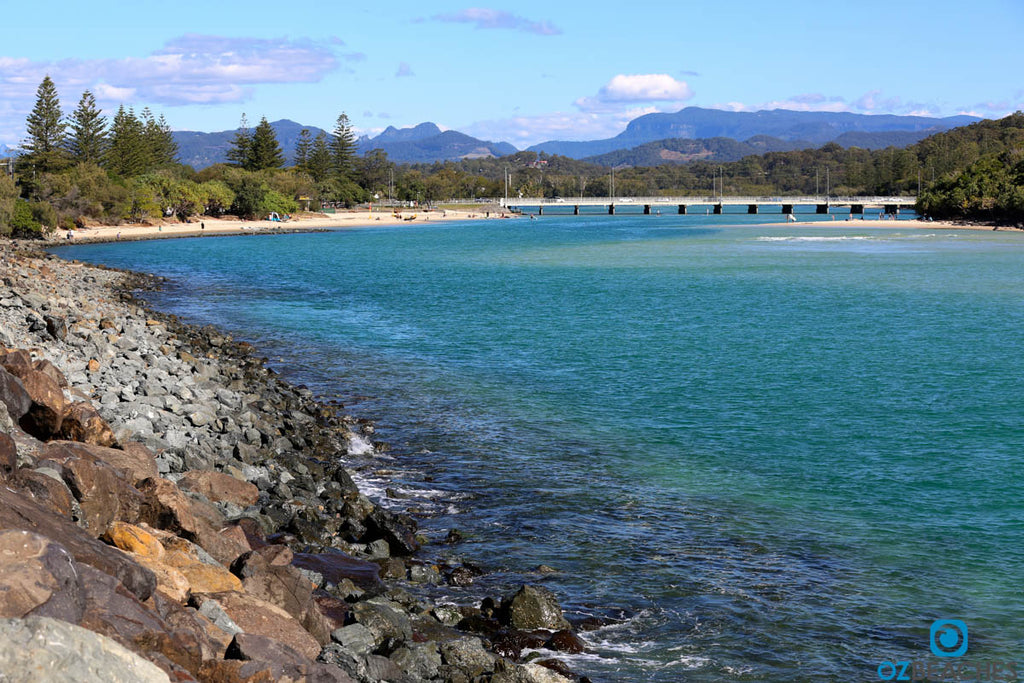
Tallebudgera Creek always seems to look like this
Simply drive along the Gold Coast Highway and follow the signs to Burleigh heads. If driving on the M1 highway, take exit 89 and follow the signs to the beach. Parking around the beach can be hard, especially on weekends so consider parking a few streets away and take a nice stroll along The Esplanade.
Miami Beach is the next beach north from Burleigh Heads
Palm Beach is the next beach south from Burleigh Heads
I hope you enjoyed reading this article as much as I enjoyed writing it. Burleigh Heads is one of the most popular destinations on the Gold Coast and has definitely earned its reputation over the years. Explore heritage listed Burleigh Head’s National Park, grab a bite to eat in one of the many cafes' or fine dining restaurants, or simply spend a relaxing day down at the beach surfing, swimming, snorkelling or kayaking in Tallebudgera Creek.
All photos in this article are available for purchase in various sizes as high resolution acrylic glass or canvas prints, and are available for licensing purposes for media and marketing/promotional material. The photos you see here have been compressed for optimal online user experience, which means we've intentionally reduced the file size and quality of each image to ensure the pages you visit load faster.
Any printed reproduction of the photos you see on OZBEACHES would be done using the original 20+ megabyte RAW files, with the additional layer of having a professional graphic designer personally inspect each image and optimise for print. The OZBEACHES watermark would be removed and would not be visible on your print. If you have any questions about this process, please email me (Adam) and let me know which photo you're interested in by quoting the caption beneath it. Alternatively you can check out our featured images in the print gallery.
If you think Burleigh Heads is a place you'd like to visit with your friends, why not share this article with them via one of the social links below. I want to help people (including you!) find their dream Australian beach, and the more information we share together will ultimately help us all in achieving that goal. I hope you enjoy your search.
Cheers,
Adam